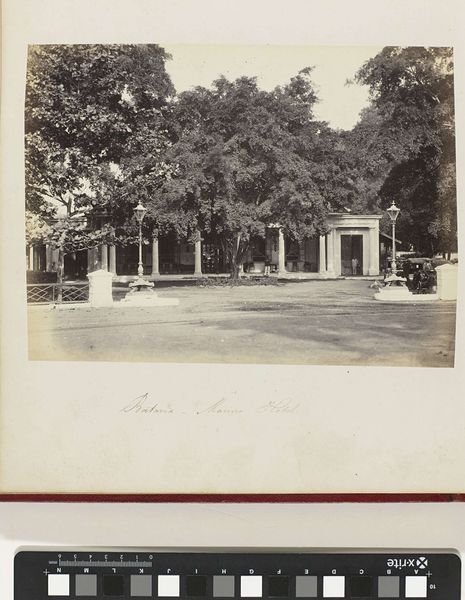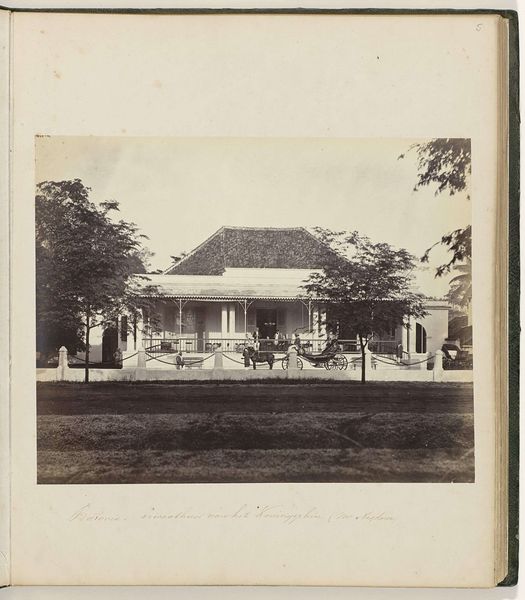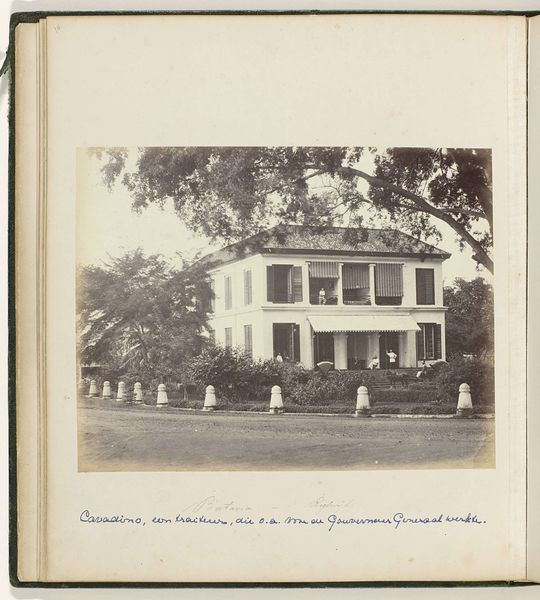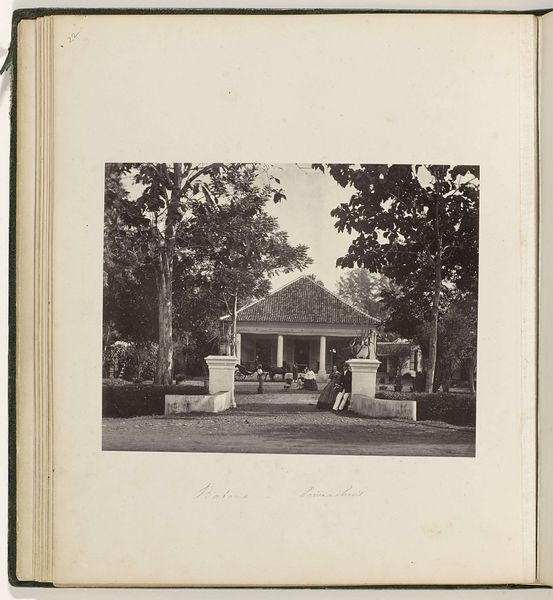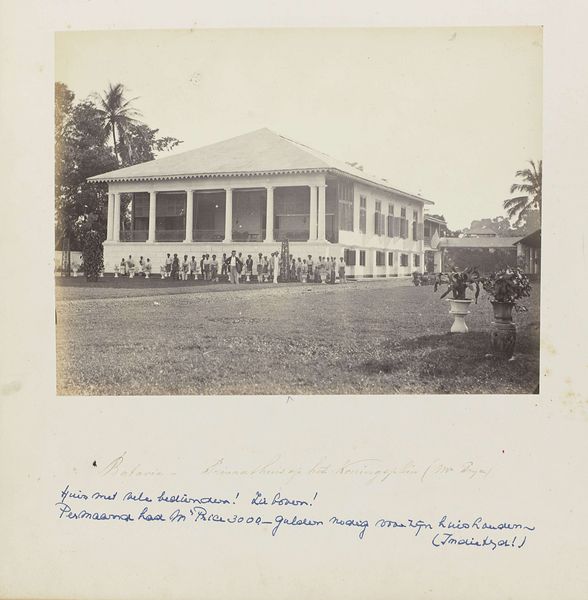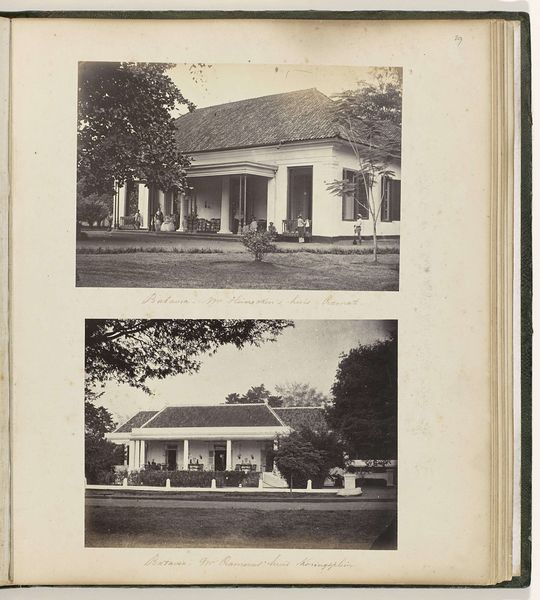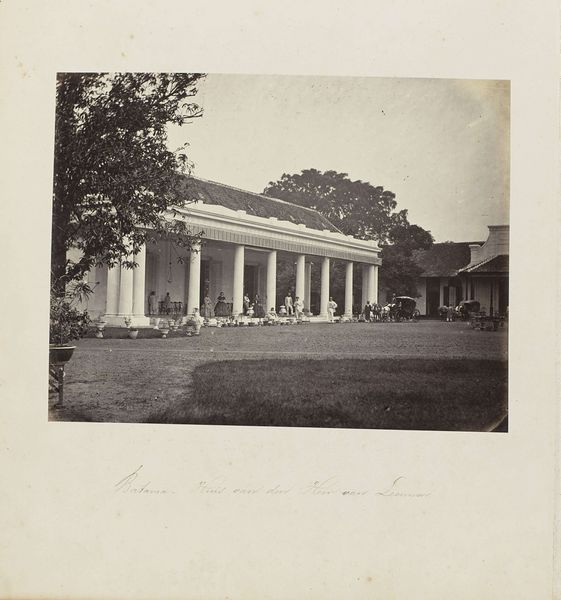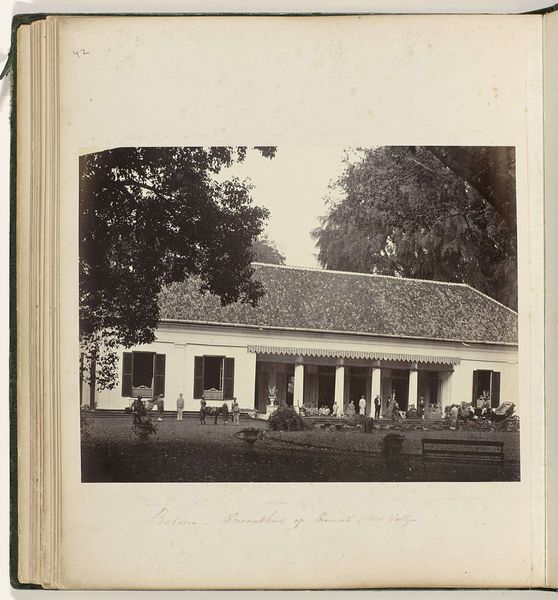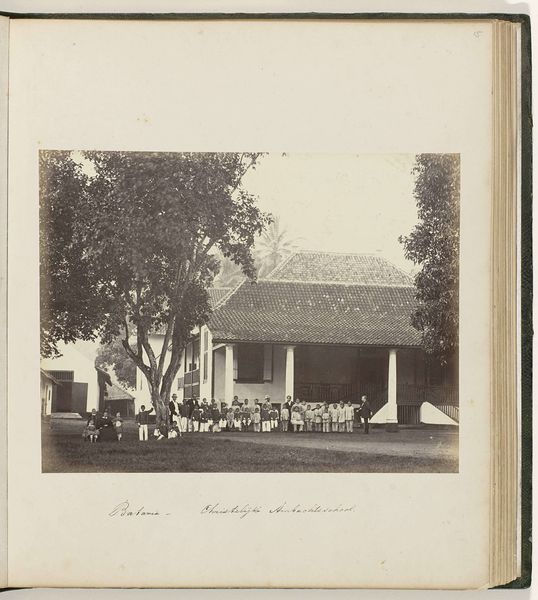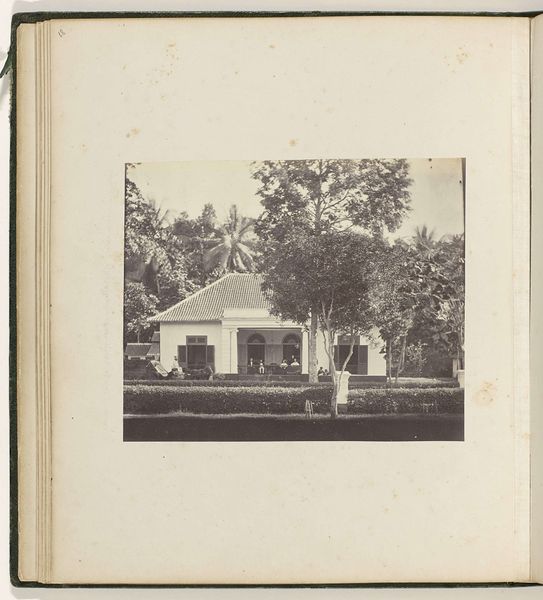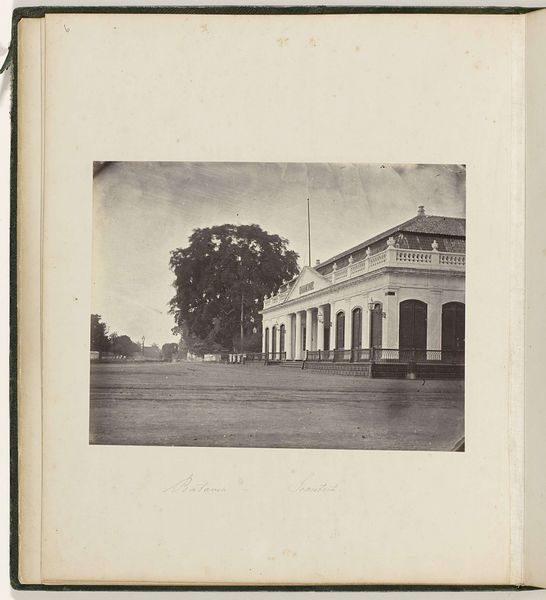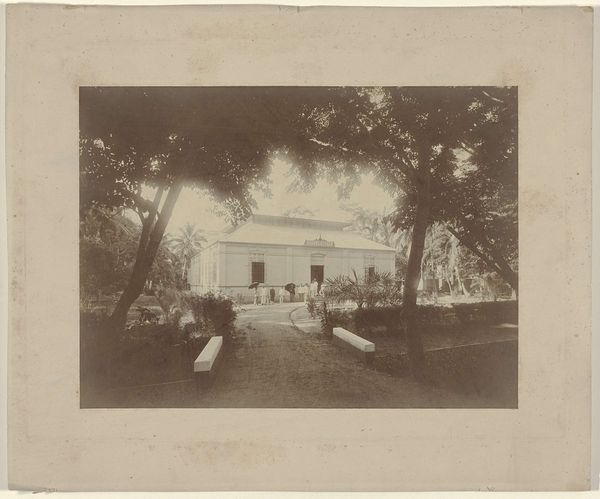
photography, albumen-print
#
portrait
#
dutch-golden-age
#
photography
#
group-portraits
#
orientalism
#
cityscape
#
albumen-print
Dimensions: height 211 mm, width 266 mm
Copyright: Rijks Museum: Open Domain
Curator: This albumen print, dating from around 1863 to 1866, is entitled "Batavia - Photographisch Atelier Woodbury & Page". Woodbury & Page, of course, being the photographers who captured this scene. Editor: It has a certain stilted quality that you often see in early photography. There's a stillness that suggests careful arrangement, a kind of posed formality despite the ostensibly casual setting. Curator: Exactly. It speaks to the technical limitations of the time but also the aspirations of photography to emulate painting, specifically group portraiture, echoing, say, some Dutch Golden Age styles in terms of its composition and subject matter. Editor: And the location, Batavia—modern-day Jakarta—tells its own story. You sense the colonial presence in the architecture of the building and perhaps in the dynamic, the arranged subjects themselves. Curator: The architectural elements indeed structure the visual field. The colonnaded veranda, the symmetry of the building...it creates a clear hierarchy in the composition, framing the individuals positioned within. The light also accentuates the textures of the clothing and architectural details, contributing to a detailed rendering. Editor: It's interesting how photography at this moment becomes intertwined with documentation, especially in colonial contexts. The studio here not only captures but almost constructs a vision, perpetuating certain perspectives of place and people through careful selection of those details, doesn't it? Curator: Certainly. Its function shifts from mere visual record to ideological assertion and the establishment of orientalist aesthetics in visual form. The clarity with which certain racial groups are depicted reinforces prevailing colonial power structures within the photograph's narrative itself. Editor: The photograph has far more visual weight as we unpack its context and think about what is highlighted, suppressed, and presented in its framing. Curator: Indeed, by analyzing formal qualities alongside the historical circumstances, the work reveals deeper societal meanings embedded in seemingly simple documentation. Editor: Thinking about it all together, this artwork becomes an important reflection about vision and representation. Thank you.
Comments
No comments
Be the first to comment and join the conversation on the ultimate creative platform.
